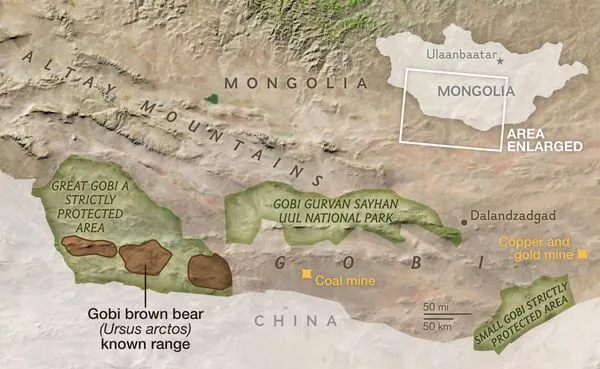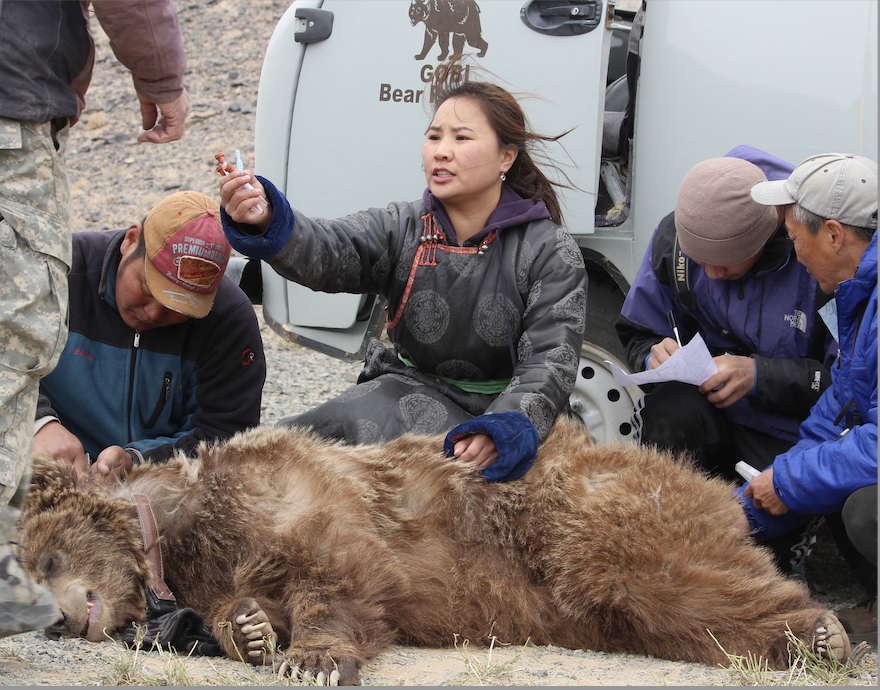Gobi bears (Ursus arctos gobiensis) are endemic to southwestern Mongolia, where only 31 individuals remain. They have a highly male-biased sex ratio and are restricted to a ~23,600 km2 area in proximity to water resources. They have extremely low genetic diversity.
To conserve this extremely fragile population, further ecological studies, such as identifying dietary items, temporal shifts in diet, and niche partitioning with other species are needed to understand the limiting factors of the population. In harsh environments with scarce resources, such as the Gobi Desert, the coexistence of carnivores relies on the availability of a limited number of food items.

Researchers from Mongolia and the USA will try to answer important research questions:
- Are these species directly competing for food resources, or do they coexist with the help of niche partitioning?
- How do diet items change seasonally for Gobi bears and others?
- Are there any differences on sexes and individual’s diet for Gobi bears and other carnivore species.
This study, supported by Bears in Mind since 2023, will help answer these questions and will provide important basic ecology data and also be directly relevant to the management and conservation of Gobi bears.


